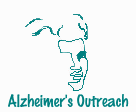 Confusion:
It's Not What You Think
Confusion:
It's Not What You Think
 Confusion:
It's Not What You Think
Confusion:
It's Not What You Think
Depression
Click HERE to print out plain text version
The individual in our society who is at greatest risk for suicide is a widowed white male older than 65 years . In fact, the elderly have the highest suicide rate of any group in the United States. The rate of depression also increases with age, and it seems likely that major depression is causally linked to suicide in the elderly. At any given time in the community, 1% to 3% of all elderly will be affected by a major depression. For those living in a nursing home, the figure increases to well above 20%. And depressed mood can affect as many 20% to 25% of dementia patients.
A physician in family practice with a large caseload of older patients recently compared major depression to a depressed mood for us: depression is when you are down in the dumps because your dog was killed. Major depression is when you can't face life because your dog be killed." Most elderly people handle losses well since the event usually concerns an anticipated loss. Women usually survive their hushands and recurrentlv subconsciously rehearse the loss of their spouses. This phenomenon does not occur with men, so a widowed male can be shattered by the unexpected loss of his wife.
Signs Of Depression:
loss of interest in life
apathy
social withdrawal
weight loss-very common in depressed elderly
insomnia
fatigue
feeling of worthlessness
guilt
thoughts of death or suicide
difficulty concentrating
memory loss
Because depression
may be characterized by memory loss or difficulty concentrating, it may
be mistaken for dementia. When a person with depression has severe diagnosis
of pseudodementia is rendered. As many as lO% of all people initially diagnosed
with dementia may really have pseudodementia. The key difference is that
pseudodementia is treatable, while dementia is a progressive, terminal
disorder. Even depression that occurs in a dementia person should be treated,
for the individual's social functioning can be improved.
Many common drugs which are prescribed for one of many possible medical conditions can cause depression as a side effect. We recommend that patient advocates understand the drug regime and associated adverse effects. Simple removal of the offending drug can alleviate the depression. There are two signilicant treatment options for depression in the elderly.
The class of medication most widely used are the tricyclics anti-depressants. These drugs can be effective in some individuals although the elderly are more likely than younger adults to be resistant to them. The most common side effect causes difficulty in coordination. Because of this, a person with a history of falls should avoid these drugs. Psychotherapy is as effective as drugs alone, and when the two forms of therapy are combined the total effect is greater than either alone.

Hope our logo helps you find your way back to us.